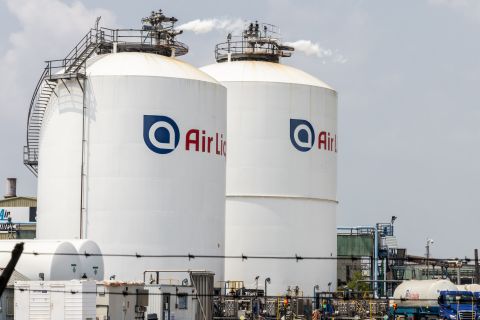For more than 40 years E&P and its predecessors have awarded cutting-edge technology with one of industry’s most coveted awards, the Meritorious Awards for Engineering Innovation (MEAs). These awards are bestowed upon best-of-class technology that solves a major technical challenge or saves operators time and money. Five years ago 12 technologies were given the top prize. But where are they now? Industry Impact will provide a monthly look back at previous MEA winners and their evolution.
When Halliburton’s Swellpacker cable system – an annular isolation cable feed-through packer – won the award for intelligent systems and components in 2008, it provided a cost-effective solution for both cased-hole and openhole applications.
Using downhole valves operated by hydraulic pressure through control lines or by electrical power through cables, operators could selectively open, close, and choke production from different sections of a wellbore. “These valves were positioned between packers to form the zonally isolated sections, but until the invention of the Swell-packer cable system, as featured in Hart Energy’s MEA, they were only available for cased-hole applications,” said Peter E. Smith, product manager for Swell Technology, Halliburton. “A swellable version of a feed-through packer became the enabling technology that permitted the world’s first openhole intelligent completions.”
Unlike the mechanical feed-through commonly used in packers for cased-hole applications, the Swellpacker did not require the control line, cable, and flatpack to be cut or spliced. The technology relied instead on custom-molded grooves to fit the control line. “This eliminated a major source of reliability issues but also cut installation time hugely, saving operators considerable cost,” Smith said.
Use of the Swellpacker cable system in major oil and gas plays has increased despite the technology changing little in design over the years, according to the company. Halliburton has improved upon a few aspects of the technology though, including changes in the variety of rubber used, which in turn means changes in the operating envelope and application type. “Some of these variants have allowed us to introduce a high-performance end ring, which can permit differential pressure ratings of 10,000 psi and potentially more,” Smith said. “These designs have been used along with fiber-optic technologies to permit the monitoring of frac or stimulation jobs in real time and subsequently monitor production performance.”
In addition, operators can now use Swellsim software to measure differential pressure and swell times for the Swellpacker’s configuration of cables instead of recording these calculations by hand. This, Smith said, gives “users more flexibility with designing cable feed-through configurations.”
The company also has developed lower cost variations for market segments that do not require such high-performance solutions; these variations have been used in coalbed methane well segmentation and microseismic work while fracturing.
Halliburton currently is designing a variant that improves upon ease of installation and orientation and that incorporates feed-through technology. “This would allow operators the advantage of quickly installing large numbers of feed-through isolation points while also being able to easily orient the packers to the cable configuration without having to use timed threads,” said Dustin A. Young, product champion, Halliburton.
Recommended Reading
Greenbacker Names New CFO, Adds Heads of Infrastructure, Capital Markets
2024-02-02 - Christopher Smith will serve as Greenbacker’s new CFO, and the power and renewable energy asset manager also added positions to head its infrastructure and capital markets efforts.
SunPower Appoints Garzolini as Executive VP, Chief Revenue Officer
2024-03-14 - Tony Garzolini will oversee SunPower’s sales, including the direct, dealer and new homes channels, along with pricing and demand generation.
Sherrill to Lead HEP’s Low Carbon Solutions Division
2024-02-06 - Richard Sherill will serve as president of Howard Energy Partners’ low carbon solutions division, while also serving on Talos Energy’s board.
Air Liquide Eyes More Investments as Backlog Grows to $4.8B
2024-02-22 - Air Liquide reported a net profit of €3.08 billion ($US3.33 billion) for 2023, up more than 11% compared to 2022.
Bobby Tudor on Capital Access and Oil, Gas Participation in the Energy Transition
2024-04-05 - Bobby Tudor, the founder and CEO of Artemis Energy Partners, says while public companies are generating cash, private equity firms in the upstream business are facing more difficulties raising new funds, in this Hart Energy Exclusive interview.





